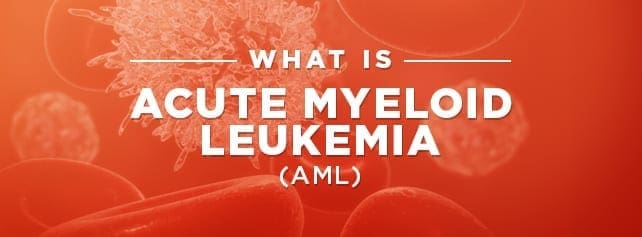Acute Myeloid Leukemia (AML)
Leukemias are cancers that begin in cells that would normally develop into blood cells. Leukemias most often affect white blood cells, but some forms of the disease may start in other blood cell types. There are several types of leukemias out there based on how fast they grow and in what cells they start in.
Acute myeloid leukemia (AML), also known as acute myelogenous leukemia and acute non-lymphocytic leukemia, is the second most common type of leukemia in children (behind acute lymphocytic leukemia, or ALL). “Acute” means that the disease spreads quickly (and is likely fatal if not caught early) and “myeloid” or “myelogenous” means it affects myeloids, a type of white blood cell.



